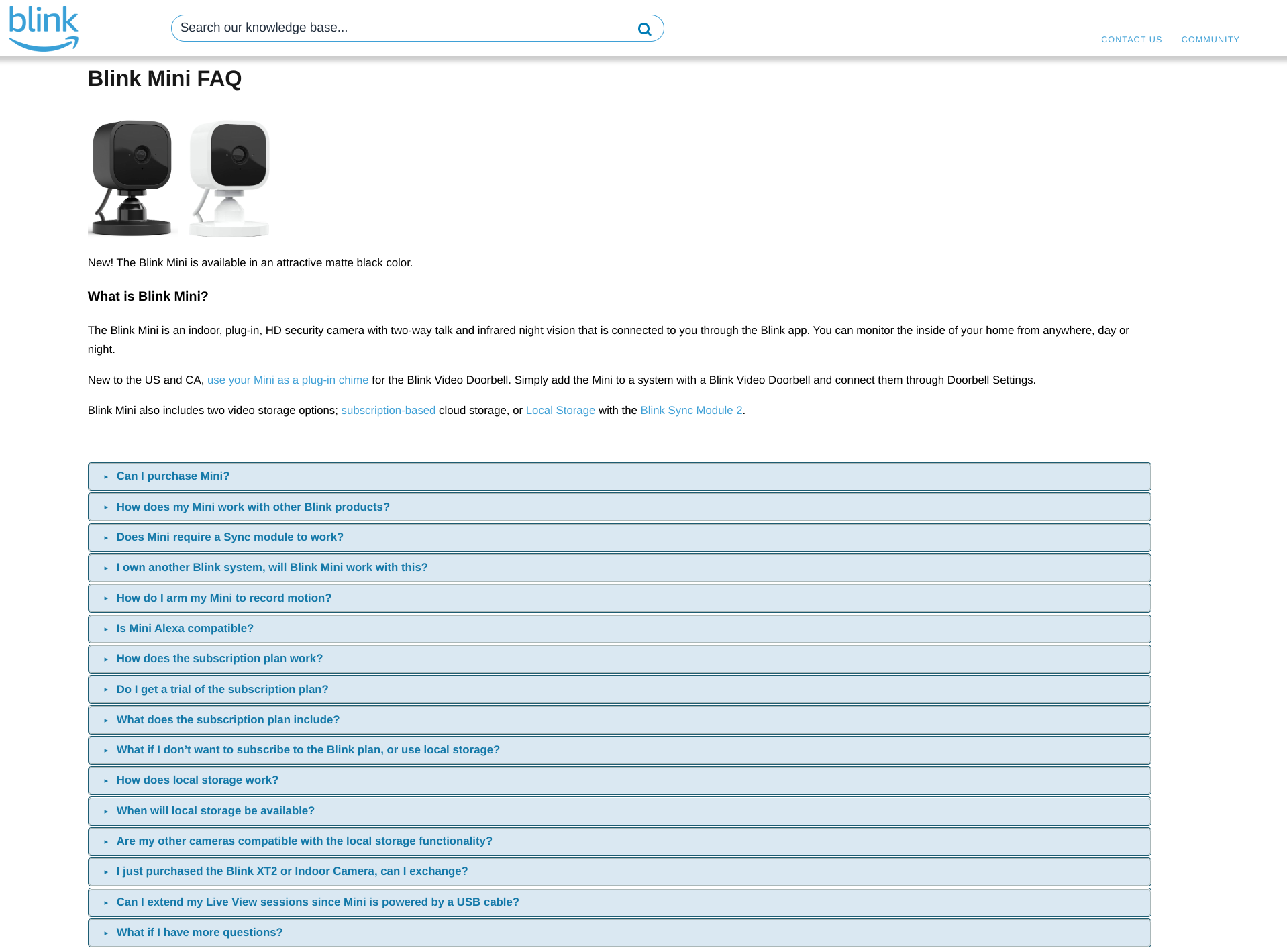No matter what industry you’re in, who your audience is, or what products or services you offer: Knowledge management (KM) should be 100% at the center of your business.
Everything that happens within your organization is based on knowledge, data, and information:
- Your products and services are created and improved by the knowledge your team holds
- Your ability to effectively engage and provide value to your customers depends on your knowledge of their needs
- Your internal processes are driven by your team’s knowledge of best business and operational practices
Simply put:
Absent this reservoir of knowledge, the gears of your business would grind to a halt.
Yet, the mere possession of this knowledge isn’t a silver bullet. It’s the seamless flow of knowledge throughout your organization (and towards your audience) that transforms it into a potent asset.
That’s where the magic of knowledge management comes in.
What is Knowledge Management?

Knowledge management (KM) is the systematic process of documenting, storing, communicating, and applying all of your company's knowledge to enhance your organization’s various processes.
In essence, knowledge management (KM) empowers organizations to harness, share, and retain their collective knowledge, thereby bolstering decision-making, problem-solving, and innovation.
A critical aspect of KM is capturing tacit knowledge—those invaluable insights and experiences held by individuals—and transforming it into explicit knowledge that's readily documentable and shareable. This process not only enhances overall efficiency and adaptability but also promotes knowledge retention across the board.
Moreover, KM fosters a culture of continuous learning and improvement. It motivates employees to share their expertise, seek new information, and contribute to the evolving body of explicit knowledge. This nurturing environment not only aids in attracting and retaining top talent but also shapes every decision and action towards better outcomes, making KM the driving force behind an organization’s sustained success.
Core Components of Knowledge Management
At its core, knowledge management is nothing more than finding the best way to identify, organize, and share knowledge so it can easily be transferred on-demand to teach someone to do something.
But to understand how knowledge management is able to achieve this, we need to understand the main components involved in KM.
1. People and Culture
Your employees are the beating heart of your company's ecosystem. It's their collective wisdom that fuels innovation and day-to-day operations. Cultivating a culture where knowledge flows like a well-sprung river not only hones your competitive edge but also orchestrates a thriving workplace where open communication and collaboration are the norm.
2. Structures and Processes
Envision a robust knowledge management system as the sturdy backbone supporting the corpus of your organization's knowledge. It's about crafting a well-ordered framework where knowledge is effortlessly shared and documented. And when team members embark on new journeys, having standardized processes to capture and transfer their expertise ensures successful knowledge retention allowing their knowledge legacy to ripple through your organization.
3. Tools and Technology
By today's standards, investing in technology to streamline and supercharge your KM initiatives is non-negotiable.

While the specific knowledge management tools that work best for your team will vary, you generally want to consider adopting the following:
- A central repository that acts as a single source of truth (SSoT) such as a knowledge base, corporate wiki, or company intranet
- Document management systems to store, organize, and manage your organization's documents and records effectively
- Learning management systems (LMS) for employee training and development
- Enterprise search tools to improve the discoverability of knowledge assets
- Expertise location tools that help identify subject matter experts within the organization
- Project management and collaboration tools for tracking tasks, progress, and knowledge generated in the course of work
- Analytics tools to monitor and analyze knowledge usage and user behavior to identify areas for improvement
- Tools for communication and collaboration
- Customer service and support software
- Data collection and aggregation tools
(We’ll discuss these tools in more detail a bit later on.)
The tools you adopt for KM purposes should integrate seamlessly with one another in order to optimize the flow of knowledge throughout your organization. Otherwise, your team will constantly be prone to bottlenecks, loss of knowledge, and other unplanned drops in productivity.
Remember to ensure the confidentiality and integrity of the organization's valuable assets by implementing security and privacy measures when using knowledge management tools and technologies. It's akin to building a fortress around your organization's treasured insights, shielding against any unwarranted intrusions.
Types of Knowledge

Organizational knowledge comes in many forms; however, for the purposes of this article, we'll be discussing the following types of knowledge:
- Explicit knowledge
- Tacit knowledge
- Implicit knowledge
- Tribal
Let’s take a closer look at each.
Explicit Knowledge
Explicit knowledge refers to information that can be well-documented, easily communicated and transferable, and can be articulated in formal language.
Some examples of explicit knowledge:
- Manuals and guides: Technical documentation, user manuals, and SOPs (Standard Operating Procedures)
- Research reports: Market research, competitor analysis, and industry trends
- Policies and procedures: HR policies and procedures, employee handbooks, safety guidelines, and organizational rules
- Training materials: E-learning modules, presentation slides, and educational videos

Knowledge base software as well as document management systems can be utilized to capture, store, and share explicit knowledge effectively.
Tacit Knowledge
Tacit knowledge is that which cannot easily be put into words — and is best digested via observation.
Examples of tacit knowledge include:
- A salesperson’s knowledge of how to approach and engage with a certain prospect
- An illustrator’s technique for developing branded creatives
- The intangible “tricks” your employees know to improve their own efficiency and productivity
As this experiential knowledge is rather difficult to pin down into words, it's usually conveyed via video demonstrations, recorded discussions, mentorship programs, and other methods that encourage direct observation and interaction.
Implicit Knowledge
Implicit knowledge is somewhat of a blend of explicit and tacit knowledge:
On the one hand, this knowledge isn't readily apparent. More often than not, it's used without the individual being aware of using it — and without even thinking about it.
On the other, once this knowledge is identified, it's relatively easy to document and communicate to new learners.
As a simple example, we'd all understand that being instructed to “turn the computer on” means to press the power button on our device. Generally speaking, most wouldn't need to be given these more specific and explicit instructions here — but this explicit explanation would be necessary for those with minimal experience with computers.
Additional examples of implicit knowledge include:
- The ability to navigate company software without thinking about the steps involved
- A team's unspoken understanding of each member's strengths and weaknesses
- Intuitive decision-making based on years of experience in a specific industry
Tribal Knowledge
Tribal knowledge is a subset of implicit knowledge that focuses on the collective wisdom possessed by your team members. This knowledge is often unique to your organization and can be a source of competitive advantage.
Typically, tribal knowledge is passed on via informal engagements and conversations. These passing moments are almost always full of valuable knowledge and wisdom that can benefit the team as a whole — if it gets documented and shared properly.
Examples of tribal knowledge include:
- Unwritten rules and norms within the organization
- Insights into the company's history and evolution
- Anecdotal lessons learned from past successes or failures
So, while tribal knowledge does tend to occur organically, strategic knowledge management will have your team actively working to document these moments as they arise. Forming communities of practice, encouraging knowledge sharing sessions, capturing insights from experienced employees, and fostering a culture of openness can help harness the power of tribal knowledge for the organization's benefit.
Benefits of Knowledge Management
Effective knowledge management can be transformative for your organization, providing numerous benefits.
For example…
1. Increases Productivity and Performance
Strategic knowledge management ensures that team members have access to the information they need, increasing productivity and performance. By providing quick access to accurate information, employees can apply best practices and work more efficiently.
2. Enhances Team Alignment
KM supports team alignment by providing access to accurate and up-to-date information, enabling seamless collaboration. With effective KM, teams will never be working with conflicting or old data — and will always be kept in the loop of any changes that may occur, as they occur.
(This alignment is essential to your team's collaborative efforts as a whole.)
Knowledge management also helps team members stay aligned with the organization's overall mission and vision. For one, company documents (e.g. team charters, mission statements, etc.) will be readily available for quick refreshers. Company messaging will also be injected and reinforced within your knowledge documents, keeping team members focused on the “big picture” at all times.
3. Destroy Silos and Minimize Knowledge Hoarding
Along with increasing team alignment, knowledge management will also help break down information silos which will then lead to the breakdown of departmental silos, and in turn better cross-team collaboration.
From there, the cultural alignment around your knowledge sharing process will keep instances of knowledge hoarding to a minimum. When sharing knowledge benefits the individual and the team more than keeping it to themselves, all team members will be more apt to do so.
4. Retain Knowledge (and Avoid Knowledge Loss)
In documenting your team's knowledge, you'll ensure this knowledge stays with your company even after your employees leave.
This includes:
- Knowledge of your SOP and best practices
- Project progress data and info
- Tacit and implicit knowledge
This facilitates better employee onboarding as well as more focused training and development for your new and current team members.
5. Improve Employee Satisfaction and Retention
Strategic knowledge management can also play a role in keeping your best employees satisfied — and keeping them around for the long haul.
Note that we said “best employees”: Those who are intrinsically motivated to add more value to the organization will be those most impacted by your KM initiatives. Basically, you’ll be enabling those who most want to be enabled — which will ultimately lead to you keeping only your most dedicated and high-performing employees onboard as a matter of practice.
(And, as a neat little side effect, you may also weed out those who aren’t dedicated to immersing themselves in your organizational knowledge.)
6. Improve Customer Experiences and Engagements
Knowledge management is essential to enhancing the customer experience — in three main ways.
For one, KM is the backbone of self-service tools like chatbots and customer knowledge bases. Before you can deliver answers and information to your customers through these automated means, the info will need to be properly documented and organized internally — which is what KM is all about.

Hands-on customer support and service will improve with strategic knowledge management, as well. This again goes back to your team members always having the information they need to complete their tasks — in this case, to provide efficiently and effectively help your users overcome trouble spots along their path to success.
Finally, your customer-facing teams will have more overarching and in-depth information on your audience. In turn, they’ll be able to improve their customer’s overall satisfaction and experience with their brand — whether engaging directly or via digital means.
7. Increase Innovation and Growth
We’ve already talked about how knowledge management will help optimize team performance.
Taking this a step further, KM will also keep your team focused on doing more across the board:
- Finding more efficient and effective solutions
- Eliminating additional bottlenecks and silos
- Creating innovative products and services
With knowledge flowing freely throughout your organization, you’ll be able to see it from multiple angles and harness it in multiple ways. From there, you’ll uncover new and innovative ways to use what you know to keep your team on the path to continuous growth.
Barriers to Effective Knowledge Management
Optimizing knowledge management may present challenges, but anticipating and addressing these barriers is key to success.
1. Lack of Purpose or Goals
Implementing KM without clear goals can lead to ineffective knowledge management systems and an inability to assess progress making it essential to establish concrete objectives for your knowledge management strategies.
2. Organizational Silos
While adopting knowledge management will lead to the breakdown of organizational silos, they may still pose an issue for your team at the onset.
In fact, a 2020 report from Deloitte found organizational silos to be the top KM-related challenge teams face today.
From isolated tools and teammates to siloed workflows and info, it all serves to block the free flow of knowledge within your organization.
3. Lack of Employee Incentive
Ideally, all of your team members should not just be involved in your KM efforts, but want to be involved in them.
Unfortunately, this won't always be the case — especially if they don't see the value in any of it. And, even if the intrinsic value of KM is clear, some may still need extrinsic rewards of some kind to stay truly motivated.
At any rate, establish clear incentives to keep employees engaged with your KM efforts.
4. Lack of Technology (and Tech Infrastructure)
A lack of appropriate technology along with a poorly planned KM framework can impede your efforts. Ensure that the knowledge management solution you choose is well-structured to support your knowledge management framework for optimal results.
5. Lack of Roles and Mandates
Failure to assign clear roles, assignments, and other mandates will lead to inaction at best — and chaos at worst. Provide explicit instructions to help team members integrate knowledge management tasks into their routines.
Knowledge Management Process
The knowledge management process consists of the following steps:
Step 1: Knowledge Creation
The first step of the knowledge management process is knowledge creation, which involves capturing knowledge and using it to create company knowledge that's easily accessible. This requires identifying or uncovering valuable information, whether it's from external sources or the expertise of your employees and then effectively documenting this knowledge for practical use.
From there, you’ll create the knowledge content as planned. This should be a collaborative effort, with members of multiple teams providing insight and input regarding:
- What information is to be presented
- How the information is presented
- How the knowledge content might be improved over time
While your knowledge content will evolve over time, it should be as comprehensive and cohesive as possible from the start.

Step 2. Assess Knowledge
Before publishing and making knowledge content accessible, ensure it meets high standards in terms of:
- Accuracy
- Comprehensiveness
- Digestibility
Engage multiple stakeholders, including the knowledge management team, in this process to identify missing or confusing information and address potential blind spots. Improve the content as needed before proceeding to the next step.
Step 3: Knowledge Organization
Determine where the new knowledge content fits within your existing knowledge management system or content library. Categorize your knowledge content appropriately to optimize its visibility and streamline the user experience. Interlink intellectual capital to help with further knowledge organization.
Step 4: Knowledge Sharing and Knowledge Transfer
Once your knowledge content is refined and ready for distribution, it's time to effectively share it with the right audience.
First, ensure your content is published and easily accessible through your internal or external knowledge management system. This makes it available for users who proactively seek information.
Next, actively promote the content to your target audience using channels that best suit their needs and preferences. It's essential to consider various communication methods to encourage knowledge sharing efforts.
For internal knowledge, consider sharing through company-wide announcements, targeted team updates, project/task management tools, or even personalized instant messages for specific individuals. External knowledge can be disseminated through onboarding materials, email campaigns, on-site chatbots, or other customer-facing channels that facilitate engagement and learning.
Pro-tip: Integrating your technology stack and user experiences is crucial for efficient and seamless knowledge sharing and knowledge transfer across your organization.
Step 5: Apply and Leverage Knowledge
Once your team has full access to the knowledge asset, they can begin putting it to good use. This stage involves more than just having the content available; your teams should actively work to leverage the content to its full potential by:
- Adding it to reference and resource guides
- Injecting knowledge gleaned into current workflows
- Creating new strategies and initiatives based on new knowledge
Step 6: Improve Knowledge
The final stage of the knowledge management process is to continually improve existing knowledge content by consistently looking for ways to enhance the value of your organization's knowledge.
Improvements should occur at routine intervals and whenever a team member identifies potential enhancements. Continuous improvement of company knowledge ensures that your knowledge management program leads to significant innovations and breakthroughs.
Knowledge Management Metrics
After establishing a robust knowledge management process, it's crucial to measure its effectiveness and impact. KM metrics help in assessing the performance and identifying areas for improvement. Key knowledge management metrics include:
- Usage Metrics: Measure how frequently knowledge resources are accessed and used.
- Accuracy Metrics: Assess the accuracy and relevancy of the knowledge content.
- Impact Metrics: Evaluate the impact of knowledge management on organizational goals and employee productivity.
Regular analysis of these metrics ensures your knowledge management system remains relevant, accurate, and continues to drive value to your organization.
Essential Knowledge Management Tools
The following knowledge management solutions are essential in supporting your knowledge management processes.
KM-Specific Tools
First, the tools that directly enable knowledge management within your organization.
1. Knowledge Base Software
Finding the best knowledge base tool is perhaps the most critical tech-related decision you’ll make, here.

Some key features to look for from your KB software of choice:
- Easy-to-use interface and functionality
- Real-time collaborative editing and communication
- Asset organization, analysis, and assessment features
2. Wiki Software
Wiki software is similar to KB software, but are often a bit more “What You See Is What You Get”.
Many wiki tools are open-source, or are more cost-effective options for small startups with minimal extra cash on-hand. Open-source wiki tools are highly customizable, and typically support hundreds of community-developed add-ons and integrations.
Though you can potentially make due with an internal wiki in place of a full-out knowledge base, you’ll likely get to a point where a more comprehensive and advanced solution is needed.
3. Document Management Software
Document management software focuses strictly on business files and documents used by a team, its clients, or its stakeholders.
An EDMS is essential for keeping important files secure, organized, and accessible — and easily utilized and transferred as needed. Key features include versioning, permissions, and regulatory compliance.
4. Data Warehouse Software
Data warehouse tools collect, organize, and house large swaths of big data from a variety of sources.
Many advanced data warehouse tools use AI to analyze data automatically. This allows teams to quickly identify trends and anomalies — and data relationships they may not have noticed working manually. Of course, your team's hands-on efforts will be enhanced drastically by this automatically-generated insight.
Additional Tools to Enhance KM
These tools can complement your knowledge management system.
1. Communication and Collaboration Software
Effective communication and collaboration are vital for knowledge management. Consider employee communication software like email, instant messaging, video conferencing, and telephony to keep your team connected and aligned. Collaborative software enables both remote and on-premise teams to work together in real-time on knowledge content or other projects.
2. Project Management Software
Project management software streamlines KM processes and helps identify knowledge gaps. By analyzing completed projects, you'll gain insights into your team's knowledge and how to adjust your KM efforts accordingly.
3. Team Management Software
Team management software supports KM-related projects by assigning the right team members to collect, document, and share organizational knowledge effectively. This tool also helps individuals focus on improving specific aspects of their performance, empowering them to contribute more to your KM initiatives as they develop.
Remember to look for tools that integrate well with each other, as this will enable seamless collaboration and enhance your overall knowledge management strategy.
Unlocking Your Organization's Potential through Knowledge Management
As we've explored the ins and outs of knowledge management, it's become clear just how crucial it is for driving success in today's fast-paced business world. Harnessing the collective intelligence of your team and fostering a culture of learning and collaboration can propel your organization toward innovation, productivity, and resilience.
So, why wait to unlock the vast potential of your organization? By adopting best practices, addressing potential barriers, and choosing the right tools, you'll be well on your way to creating a knowledge powerhouse.
Ready to revolutionize the way your organization manages and shares knowledge? Sign up for a free 14-day trial of our cutting-edge knowledge base software today, and watch your team soar to new heights of success!




